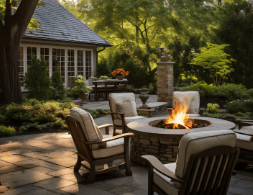A cottage garden is a romantic and charming oasis that can transport you to a bygone era of simpler times. Whether you’re starting from scratch or revamping an existing garden, designing a cottage garden can be a fun and rewarding experience. In this article, we’ll explore some tips for creating a dreamy cottage garden that will transport you to a world of whimsy and romance.
Tip 1: Choose the Right Plants
The first step in designing a cottage garden is choosing the right plants. Traditional cottage gardens are characterized by their abundance of colorful flowers and foliage. Some of the most popular plants for a cottage garden include roses, peonies, lavender, delphiniums, hydrangeas, and foxgloves. These plants not only provide an abundance of color but also add texture and fragrance to the garden.
When choosing plants for your cottage garden, it’s important to consider the amount of sunlight and shade in the area. You should also choose plants that are suited to your climate and soil type. Some cottage garden plants, such as roses, require regular maintenance, so it’s important to factor in the amount of time and effort you’re willing to invest in your garden.
Tip 2: Incorporate Hardscaping
In addition to plants, hardscaping elements can add charm and structure to a cottage garden. Some popular hardscaping elements include garden paths, stone walls, arches, and trellises. These elements can help define different areas of your garden and create visual interest.
When incorporating hardscaping elements, it’s important to choose materials that complement the overall style of your cottage garden. For example, a stone wall might be a better fit for a traditional English cottage garden, while a wooden trellis might work well in a more rustic, country-style garden.
Tip 3: Create a Focal Point
A focal point can be a key element in a cottage garden, drawing the eye and providing a visual anchor. Some popular focal points for cottage gardens include fountains, statues, and bird baths. A seating area, such as a bench or swing, can also serve as a focal point and provide a peaceful spot to sit and enjoy your garden.
When choosing a focal point, it’s important to consider the scale and proportion of your garden. A large statue might overwhelm a small garden, while a small bird bath might get lost in a large, sprawling garden.
Tip 4: Embrace a Wild, Untamed Look
Cottage gardens are known for their wild, untamed look. Rather than adhering to strict design principles, a cottage garden should feel organic and free-flowing. To achieve this look, you can incorporate a variety of plant heights, textures, and colors. Allow plants to spill over garden borders and paths, creating a natural and whimsical feel.
Tip 5: Consider Seasonal Interest
To create a cottage garden that’s beautiful year-round, it’s important to consider seasonal interest. Choose plants that bloom at different times throughout the year, ensuring that there’s always something in bloom. You can also incorporate plants with interesting foliage, such as variegated hostas or colorful ornamental grasses.
In conclusion, designing your dream cottage garden can be a fun and rewarding experience. By choosing the right plants, incorporating hardscaping elements, creating a focal point, embracing a wild, untamed look, and considering seasonal interest, you can create a charming and romantic oasis that you’ll enjoy for years to come.











